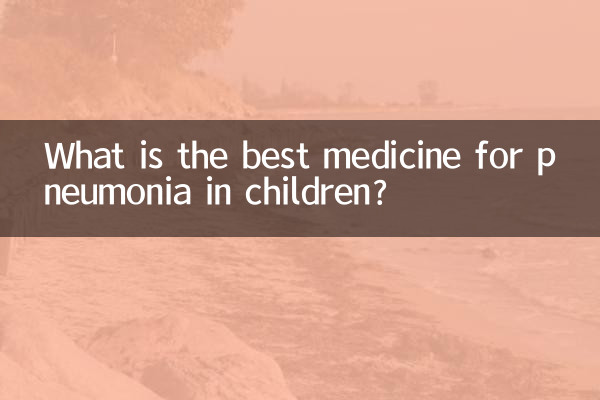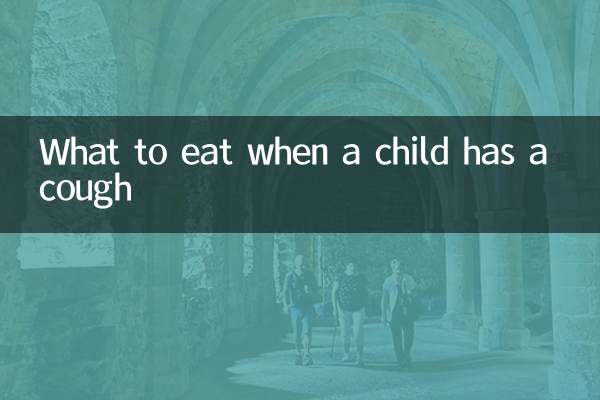What is the best medicine for pneumonia in children?
Pediatric pneumonia is a common respiratory infection in children, especially in autumn and winter. Recently, there has been a lot of discussion on the Internet about the treatment and medication of childhood pneumonia, and many parents are concerned about how to choose the most effective medication. This article will combine hot topics and authoritative medical advice in the past 10 days to provide you with structured data and analysis.
1. Common causes of pneumonia in children

Pneumonia in children is mainly caused by viral, bacterial or mycoplasma infections, and different treatment options are corresponding to different pathogens. The following are the pathogen detection methods recently recommended by the medical community:
| Pathogen type | Detection method | popular season |
|---|---|---|
| Viruses (such as respiratory syncytial virus) | Throat swab nucleic acid test | High incidence in winter |
| Bacteria (such as Streptococcus pneumoniae) | Blood culture + drug susceptibility test | Can occur throughout the year |
| Mycoplasma | Serum antibody testing | More common in autumn and winter |
2. Comparison of drug treatment options
According to the recent consensus of pediatric experts and drug usage data in tertiary hospitals, the recommended drugs for different pathogenic infections are as follows:
| pneumonia type | first line drugs | alternative medicine | Course of treatment |
|---|---|---|---|
| viral pneumonia | Oseltamivir (influenza virus only) | Symptomatic treatment + interferon nebulization | 5-7 days |
| bacterial pneumonia | Amoxicillin and Clavulanate Potassium | ceftriaxone/azithromycin | 7-10 days |
| Mycoplasma pneumonia | Azithromycin | Doxycycline (≥8 years) | 3-5 days (sequential treatment) |
3. Answers to recent popular medication questions
1.Antibiotic selection:Recently, the issue of azithromycin resistance has been a hot topic on the Internet. Clinical data shows that the resistance rate of mycoplasma to azithromycin in my country is about 60%, but it is still the drug of choice. When treatment fails, consider switching to doxycycline (≥8 years old) or quinolones (use with caution under 18 years old).
2.Combined treatment with traditional Chinese medicine:Multiple recent studies have shown that Chinese patent medicines such as Lianhua Qingwen can help relieve symptoms, but they cannot replace anti-infective treatment. Pay attention to drug interactions when using.
3.Nebulization treatment:Budesonide + terbutaline nebulization can relieve airway spasm, but the indications need to be strictly controlled. Recent data from a tertiary hospital shows that reasonable atomization can shorten the course of the disease by 1-2 days.
4. Medication precautions
| drug type | Common adverse reactions | Monitoring indicators |
|---|---|---|
| Azithromycin | Gastrointestinal reactions, QT interval prolongation | Liver function, electrocardiogram |
| Cephalosporins | allergic reactions, diarrhea | Kidney function and skin rash observation |
| Oseltamivir | Nausea, headache | Psychiatric symptom monitoring |
5. Latest recommendations from authoritative organizations (updated in 2023)
1. The Pediatric Branch of the Chinese Medical Association emphasizes:Routine use of ribavirin is not recommendedIn the treatment of viral pneumonia, the efficacy is uncertain and the side effects are severe.
2. The World Health Organization recommends:Infants under 2 months old who develop symptoms of pneumonia need to be hospitalized immediately, it is not advisable to self-medicate at home.
3. Latest guidelines from the National Health Commission: Recommendations13-valent pneumococcal vaccineAs a primary preventive measure against pneumonia in infants and young children.
Summarize:Medications for pneumonia in children need to be selected individually based on pathogen test results, and parents should not self-medicate. Viral pneumonia requires symptomatic support, bacterial pneumonia requires a full course of antibiotics, and macrolide drugs are the first choice for mycoplasma pneumonia. During the treatment period, changes in the condition should be closely observed, and the plan should be adjusted in a timely manner if necessary.

check the details

check the details